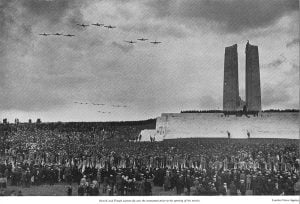
Exploration
Canadian Space Agency astronaut profiles
The men and women that have become part of Canada’s space team
- 1067 words
- 5 minutes
This article is over 5 years old and may contain outdated information.
Science & Tech

Over the last few weeks I’ve been sharing a selection of my favourite stats and feats from my new book Canadian Geographic Biggest and Best of Canada: 1000 Facts & Figures (in stores now!). If you enjoy trivia, particularly Canadian trivia, or have a particular fascination with Canadian facts and accomplishments, you’ll surely enjoy my book. In the hopes of further capturing your interest, I’ve been sharing a top-10 selection of items from each category that particularly stood out for me. This week: transportation.
1. He wasn’t the first, but he was darn close. Frederick Baldwin “Casey” Walker became the seventh person to pilot a plane (and the first Canadian and Commonwealth subject to do so). On March 12, 1908, at Hammondsport, New York he flew a plane called the “Red Wing,” a biplane with the propeller located behind the wing. It flew a distance of 97.2 m before flipping to its side and crashing.
2. The first flight in Canada occurred in Baddeck, Nova Scotia, on February 23, 1909. The silver-winged biplane, called the “Silver Dart,” was piloted by J.A.D. McCurdy. It flew 800 m at an average speed of 65 km per hour. The Silver Dart flew 200 flights before it was damaged beyond repair.
3. The R-100 airship was the first and only rigid-hull airship to ever fly in Canada. After a four-day flight from England, the airship moored at Saint-Hubert, Quebec, on August 1, 1930. It’s estimated that more than one million people went to see it there.
4. The Avro Canada C102 Jetliner was a first in many respects. Built by Avro Canada in 1949, it was the first Canadian jet to fly and the first commercial jet in North America (and the second in the world: just two weeks behind the first!). The prototype jet’s first flight was over Toronto’s Malton Airport on August 10, 1949. The following year, the plane was the first to make an airmail delivery by jet on April 18, 1950, on a flight from Toronto to New York.
5. Trains are an important part of the foundation of our nation, and Canada’s first railway was opened in 1836 between La Prairie and Saint-Jean-sur-Richelieu, Quebec. It was called the “Champlain and St. Lawrence Railroad,” since it connected the St. Lawrence River to Lake Champlain. Prior to the railway’s official opening, test runs of the locomotive were conducted at night so as not to frighten locals.
6. The buzz these days over electric cars seems a little funny when you consider the nation’s first electric car was built more than 100 years ago, in 1893. Using a battery and motor designed by William Still, Frederick B. Featherstonehaugh commissioned the Dixon Carriage Works to build it. The two-person car was capable of about 25 km per hour.
7. The first successful gasoline-powered car in Canada was built by George Foote Foss in Sherbrooke, Quebec, in 1896.
8. The nation’s first production gasoline-powered car to be put into production was the LeRoy, which debuted in 1902. Fewer than 20 of the cars were produced by the LeRoy Manufacturing Co. of Berlin, Ontario (now Kitchener), before the company closed in 1904. The cost of a brand-new LeRoy in 1903? A mere $650 (the average annual income at the time was about $275).
9. The Trans-Canada Highway, which runs 7,821 km from St. John’s to Victoria, is the one of the world’s longest highways, along with the Trans-Siberian Highway and Australia’s Highway 1. When the road opened at B.C.’s Rogers Pass on July 30, 1962, more than 3,000 km of it remained unpaved. Eventually completed in 1970, the Trans-Canada cost a total of $1 billion dollars to build.
10. If someone tells you to hit the road in Saskatchewan, be prepared for a very long walk. The province has more road surface than any other in the country: a total of 250,000 km.
Are you passionate about Canadian geography?
You can support Canadian Geographic in 3 ways:

Exploration
The men and women that have become part of Canada’s space team

Science & Tech
Courage and Passion: Canadian Women in the Natural Sciences aims to inspire young women to pursue careers in science

History
A trip back in time to the memorial’s dedication

Environment
Canada's largest cities are paving the way for more eco-conscious commuting choices